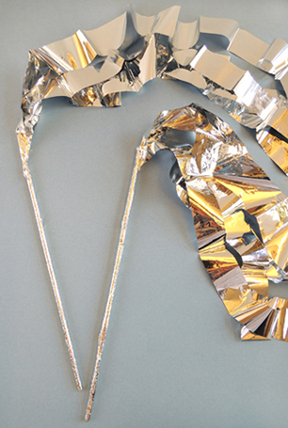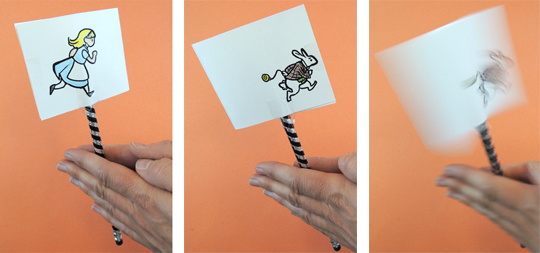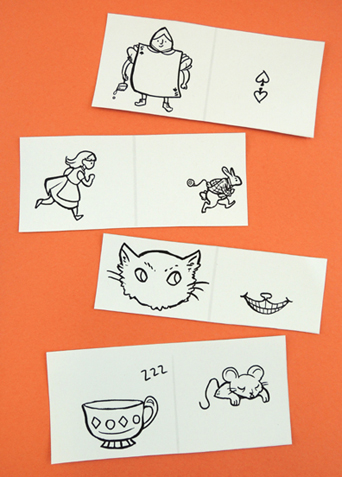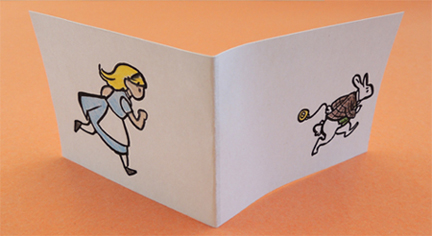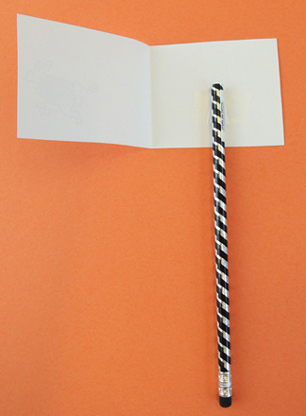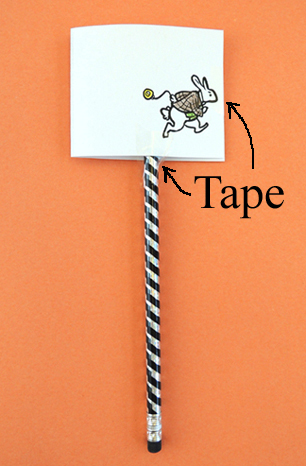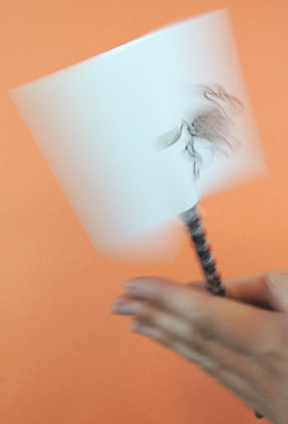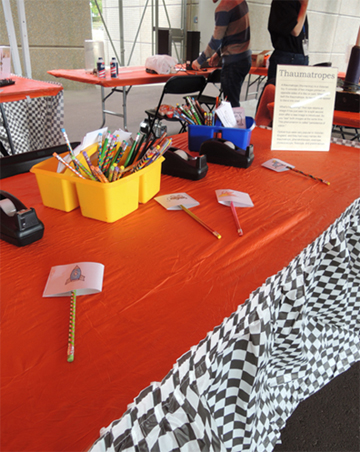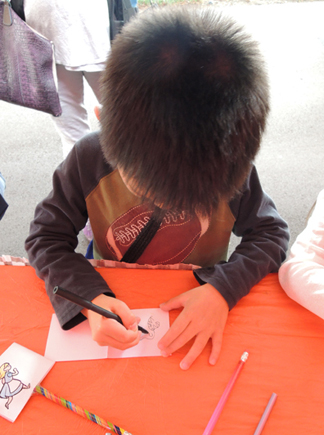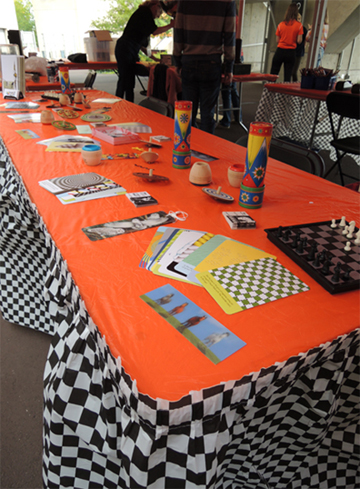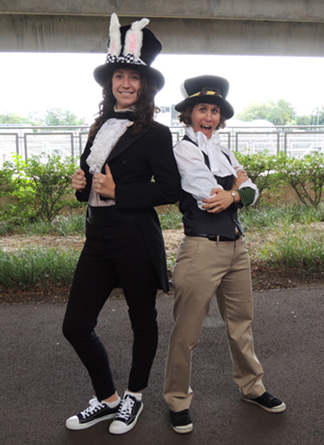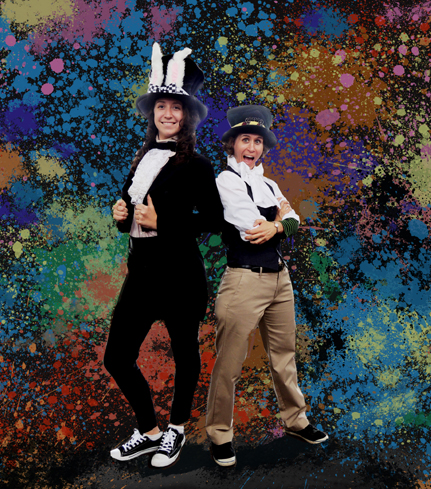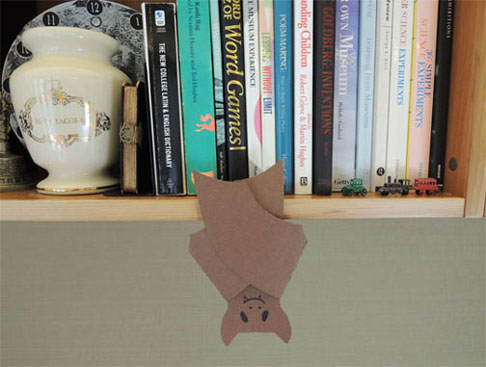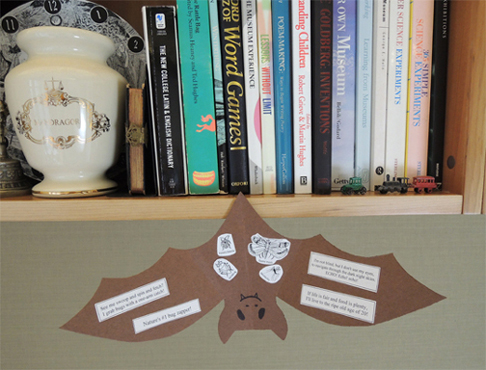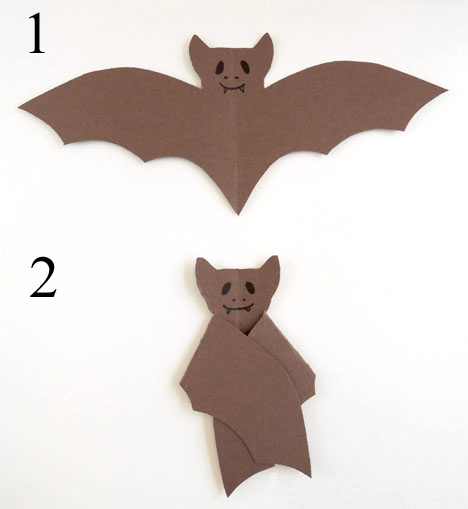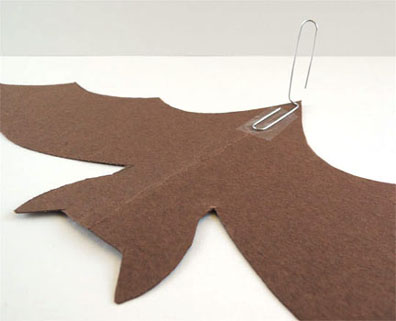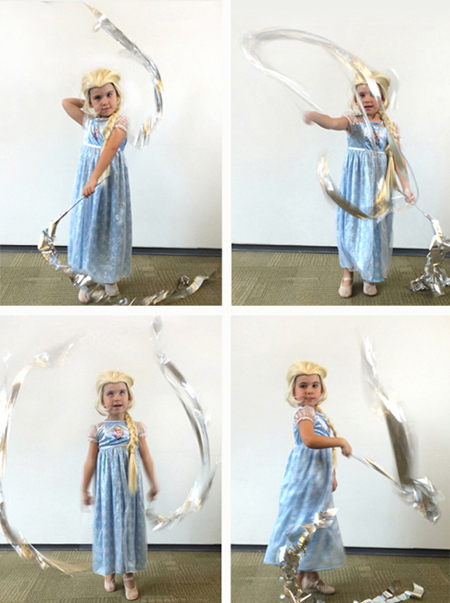 Does your Snow Queen need some silvery magic? Try these super simple, super inexpensive, but super fun metallic dance streamers! We took them out on our gallery floor to see how they’d go over. Three little girls immediately asked for a set. I’ll admit, I played with them too. It’s impossible not to twirl them and feel just a little bit magical.
Does your Snow Queen need some silvery magic? Try these super simple, super inexpensive, but super fun metallic dance streamers! We took them out on our gallery floor to see how they’d go over. Three little girls immediately asked for a set. I’ll admit, I played with them too. It’s impossible not to twirl them and feel just a little bit magical.
You’ll need:
- 2 wooden dowels
- 1 silver metallic tablecloth
- Scissors
- Silver tape
The best tablecloth to use is a super-shiny crinkly one (I bought mine at Oriental Trading Company for $3.25). Spread out the tablecloth and cut 8 ribbons from it. Here are my ribbon measurements (you can adjust yours according to the height of your child):
- 2 ribbons measuring 2.25″ x 41″
- 2 ribbons measuring 2.25″ x 49″
- 2 ribbons measuring 2.25″ x 60″
- 2 ribbons measuring 2.25″ x 66″
Bunch 4 ribbons (one of each size) together, twist tightly, and tape securely to one end of a wooden dowel. Continue wrapping the tape downward and around the dowel until it’s covered. I used silver prismatic tape from Party City (a roll costs $4.99).
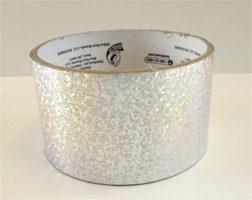 The Party City tape is the same width as duct tape, which can be awkward to wrap around a thin dowel. So I cut the original tape pieces in half, creating narrower strips (since the tape has peel-off backing, cutting long strips in half is easy). Repeat the above steps with the remaining 4 ribbons and wooden dowel, and you’re done!
The Party City tape is the same width as duct tape, which can be awkward to wrap around a thin dowel. So I cut the original tape pieces in half, creating narrower strips (since the tape has peel-off backing, cutting long strips in half is easy). Repeat the above steps with the remaining 4 ribbons and wooden dowel, and you’re done!
 If you’re a fan of Hans Christian Andersen’s original Snow Queen, you might want to check out this fabulous adaptation by the Princeton Youth Ballet!
If you’re a fan of Hans Christian Andersen’s original Snow Queen, you might want to check out this fabulous adaptation by the Princeton Youth Ballet!

